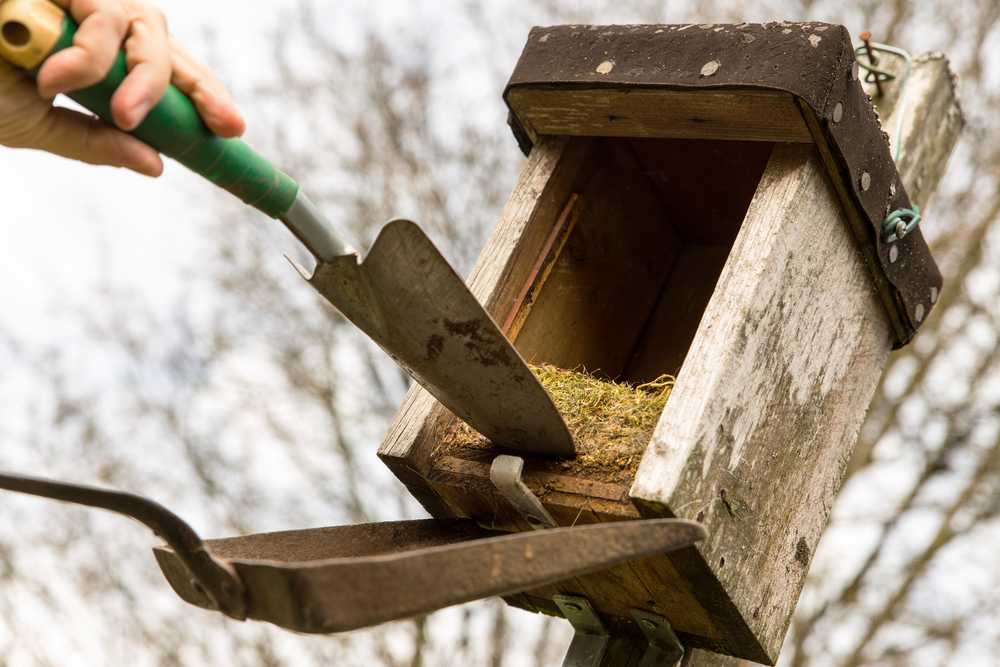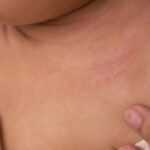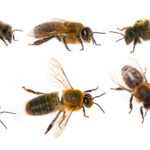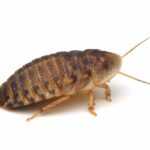The Ultimate Guide to Bird Nest Removal: What You Need to Know
Need to remove a bird nest from your property? Bird nest removal is essential to avoiding damage and health risks. This guide explains how to do it safely and legally, with expert bird control services to help you manage the issue effectively.
- Bird nest removal is essential to mitigate health risks and prevent property damage caused by bird droppings and nesting materials.
- Legal guidelines regulate the removal of active bird nests, making it crucial to check local laws and federal law to avoid fines and ensure humane practices.
- Professional bird control services utilize specialized techniques and equipment, ensuring safe and effective nest removal while minimizing health risks and legal complications.
Understanding Bird Nest Removal
Bird nest removal is often necessary to prevent potential problems caused by wild birds. The accumulation of bird droppings and nesting materials can pose serious health risks, including diseases such as histoplasmosis and toxoplasmosis. Birds nesting in or around your house can also cause physical damage to property, including roofs and vehicles. Professional bird removal services provide safe and effective solutions, conducting thorough inspections to assess the situation before taking action.
Removing bird nests is not just about dealing with the immediate problem. It’s about understanding the broader implications, including health risks and potential property damage. Bird droppings contain uric acid, which can corrode building materials, leading to long-term damage if not addressed promptly. This is why professional wildlife removal services, which offer comprehensive inspections and targeted removal strategies, are often the best choice.
A crucial part of bird nest removal is adhering to legal guidelines. Federal regulations prohibit the removal of active nests belonging to native bird species, especially those with eggs present or brooding adults. It’s essential to check local legislation and consult a local wildlife rehabilitation center to understand your legal obligations regarding bird nest removal. Ignoring these regulations can lead to hefty fines and legal complications.
Why Remove a Bird Nest?
The presence of bird nests can lead to significant health risks. Bird droppings can spread diseases like histoplasmosis and toxoplasmosis, posing serious health threats to humans and pets. The accumulation of droppings and nesting materials can also harbor bacteria, bird mites, and other parasites, further increasing the risk of diseases. Removing bird nests is essential for maintaining a healthy living environment.
Birds can cause extensive physical damage to property. Their droppings are highly acidic and can corrode building materials, leading to structural damage over time. Additionally, birds nesting in or around your house can damage roofs, insulation, and even vehicles. Prompt removal of bird nests can prevent costly repairs and maintain your property’s integrity.
Legal Considerations
When it comes to bird nest removal, legal considerations are paramount. Federal law, including the Migratory Bird Treaty Act, protects active nests of native bird species, making it illegal to remove them during the nesting season. This means that if you find an active nest with eggs or chicks, or brooding adults, you must wait until the nesting season is over before you can legally remove it. Ignoring these regulations can result in severe penalties.
Local laws also play a significant role in bird nest removal. It’s essential to check your local legislation to understand your specific legal obligations. Some areas may have additional protections for certain bird species, like house sparrows or chimney swifts, or specific guidelines on how to handle nest removal. By staying informed about these laws and working with a wildlife service or a local wildlife rehabilitation center, you can ensure that your actions are both legal and humane.
Common Nesting Sites and Costs
Birds often choose familiar places like eaves, gutters, attics, dryer vents, and chimneys for nesting. These common nesting sites can pose various risks and challenges, each with its own set of costs for removal. Understanding the typical nesting sites and associated costs can help you prepare for any bird nest removal needs you might encounter.
From chimneys to roof overhangs, each nest site presents unique challenges. Birds nesting in vents or attics can block airflow, leading to safety hazards, while nests in gutters can cause water damage. In each subsection, we will break down the specific costs and considerations for removing nests from these common sites.
Chimneys
Bird nests in chimneys can pose significant risks, including fire hazards and blockages. The cost of removing a bird nest from a chimney typically ranges from $175 to $800. This cost can vary based on the complexity of the removal process and the specific risks involved. Installing chimney caps after removal is highly recommended to prevent future nesting.
Keeping your chimney free of nests is vital for home safety and functionality.
Roof Overhangs (Eaves)
Removing bird nests from roof overhangs, or eaves, can be quite costly, with prices ranging from $300 to $1,000. For inactive nests, the cost may increase to between $300 and $2,000, especially if preventive measures like installing humane bird spikes are included. These spikes can deter birds from landing and nesting in high-risk areas.
Mesh wiring and similar preventive installations can deter birds from nesting in eaves. Bird control services often tailor strategies to local wildlife patterns, ensuring compliance with local laws while preventing future nesting. Investing in preventive measures can save you from future nest removal costs and protect your property from damage.
Vents (Dryer and Bathroom Vents)
Bird nests in dryer vents and bathroom vents can cause blockages that lead to potential safety hazards, including increased fire risks. The cost of removing a bird nest from vents typically falls between $200 and $500.
Promptly addressing nests in vents maintains proper airflow and prevents dangerous situations.
Attics
Attics are common nesting sites for birds, but they can cause significant damage to insulation and create health risks by attracting insects and other parasites. The cost of removing bird nests from attics typically ranges from $300 to $600. Accessibility challenges often arise due to confined spaces and the potential need for specialized equipment.
Keeping your attic free from nests protects both your home’s structure and your health.
Gutters
Bird nests in gutters can lead to costly repairs if not addressed promptly, with removal costs ranging from $1,350-$1,700. Installing gutter guards after nest removal prevents future nesting and ensures safety.
This proactive step can save you from recurring removal costs and potential water damage to your property.
Safe Removal Methods
Safe removal methods are essential to ensure the well-being of both the feathered friends and your property. Removal techniques must ensure bird safety and minimize home damage. Effective prevention involves proactive measures such as cleaning areas of previous nesting materials and using deterrents before birds arrive. This can stop birds from nesting and mitigate the associated risks.
Careful removal is crucial to avoid injury to hidden birds and to prevent the spread of potential diseases. Professional bird control services use specialized tools and techniques to ensure that nests are removed safely and effectively. This method addresses the immediate issue and helps prevent future nesting.
Identifying Active Nests
Identifying an active nest is crucial before attempting removal. An active nest usually contains eggs, chicks, or brooding adults, indicating that it should not be disturbed. Observing from a distance can reveal if wild birds are visiting, indicating activity. Birds may leave their nests to gather food, so the absence of parent birds does not always mean the nest is abandoned.
Correct identification ensures legal compliance and bird safety.
Handling and Disposal
Careful attention is needed when handling and disposing of bird nests to prevent injury to any hidden birds and to avoid spreading bird mites and other parasites. Nests should be gently removed, and gloves should be worn to mitigate health risks from pathogens.
Nests in chimneys can be removed through methods like trapping or using smoke. Proper disposal, such as sealing nests in a plastic bag before discarding, minimizes fire risks and ensures safety.
Preventing Future Nesting
Preventing future nesting is essential to avoid recurring issues and maintain the integrity of your home. Sealing entry points like vents and chimneys prevents birds from entering and nesting. Regular cleaning and installing exclusion netting can significantly reduce re-nesting. Complete bird nest removal solutions include cleanup and preventive measures to avoid future infestations.
Humane removal techniques may involve additional costs, such as mesh wiring to prevent future nesting. Investing in prevention protects your property from damage and reduces health hazards.
Bird Netting and Spikes
Bird netting and spikes are humane tools used to prevent birds from nesting in certain areas. Specialized tools like bird netting and bird spikes are used by professionals to deter birds from nesting.
Other techniques to deter nest rebuilding include changing surface shapes, adding spikes, and using decoys like owl or snake models. These methods help prevent birds from returning to strange places or high-risk areas.
Sealing Entry Points
Sealing vents and chimneys prevents birds from accessing and nesting inside homes. Filling gaps around the house blocks access to potential nesting sites and effectively stops birds from nesting.
Heavy-duty bird netting with a mesh size of 3/4 inch is highly effective in blocking birds from nesting in various spaces, including attics and eaves. These measures help maintain your home’s integrity.
Alternative Nesting Sites
Providing birdhouses can effectively redirect birds away from unwanted nesting areas. Placing birdhouses in safe, quiet areas redirects nesting birds away from problematic locations and encourages the use of a nest box.
This method keeps migratory birds and cavity nesters away from undesired locations, providing them a safe nesting place where birds build nests without causing damage.
Health and Safety Concerns
Bird nests can pose various health and safety concerns. Bird droppings may contain harmful pathogens that can pose health risks to humans. Nests can also harbor parasites, leading to potential infestations in human dwellings. Addressing these concerns promptly is essential for maintaining a healthy living environment.
Nesting birds can block vents, posing fire risks and leading to malfunctions in appliances. Bird nests in attics can attract pests and lead to insulation damage, creating additional health hazards. Understanding these risks allows you to take appropriate measures to protect your home and health.
Bird Droppings and Parasites
Bird droppings can transmit disease-causing parasites harmful to humans and pets. Over 60 diseases can be transmitted through bird droppings, affecting public health. Birds can carry various ectoparasites, including bird mites and other parasites, some of which can infest human dwellings and bite people.
Wearing protective clothing and using disinfectants during nest removal mitigates health risks from pathogens. Wearing gloves during nest removal protects against contamination from parasites.
Proper nest disposal is crucial for preventing health risks. Sanitary precautions and disinfectants help mitigate disease spread. These measures effectively manage health risks associated with bird droppings and parasites.
Fire Hazards
Bird nests can pose significant fire hazards, particularly in areas like vents. Restrictions in airflow caused by nests can increase fire risk. Promptly addressing bird nests in vents is vital to prevent fires and ensure safety.
Keeping vents clear of nests maintains proper airflow and reduces fire hazards.
Professional Bird Nest Removal Services
Professional bird nest removal services provide effective and humane solutions for managing bird infestations. The national average cost for bird nest removal ranges from $350 to $650, depending on location and removal complexity. Professionals can handle various nest sites and ensure correct and safe removal.
Hiring professionals for bird nest removal ensures the process is done correctly and safely. Professionals use specialized tools and techniques, ensuring effective removal. This minimizes risks associated with DIY removal, such as injury or legal issues.
Expertise and Equipment
Professional bird control services use specialized tools and techniques for effective and humane nest removal. Professionals often use advanced methods like thermal imaging to locate and safely remove hidden nests.
Their expertise minimizes risks like injury or legal issues associated with DIY bird removal. Hiring experts ensures the process is handled correctly, protecting both birds and your property.
Bird nest removal is a critical task that requires careful consideration of health risks, property damage, and legal obligations. Understanding the common nesting sites and associated costs can help you prepare for any bird nest issues you might encounter. Safe removal methods and preventive measures are essential to ensure the well-being of both the birds and your property. Professional bird control services provide effective and humane solutions for managing bird infestations. By taking proactive steps, you can protect your home and maintain a healthy living environment.
Frequently Asked Questions
Why is it necessary to remove a bird nest?
It is necessary to remove a bird nest to mitigate health risks associated with diseases from bird droppings and to prevent potential property damage caused by nesting activities.
What are the legal considerations for bird nest removal?
It is crucial to understand that federal law and local laws protect active nests of certain bird species, making their removal during the nesting season illegal. Therefore, always verify local regulations and consult a local wildlife rehabilitation center before contemplating any nest removal.
What are the common costs associated with bird nest removal?
Common costs associated with bird nest removal range from $175 to $1,700, depending on factors such as location and complexity, with additional expenses for preventive measures. It is essential to consider these factors when budgeting for such services.
How can I prevent birds from nesting in my home?
To prevent birds from nesting in your home, seal all entry points, install bird netting and spikes, and consider providing alternative nesting sites such as birdhouses. These actions will discourage birds from making your home their nesting ground.
Why should I hire a professional for bird nest removal?
Hiring a professional for bird nest removal is essential as they utilize specialized tools and techniques to ensure safe and effective removal, thereby minimizing risks to both the birds and your property. This expertise protects your home while adhering to regulations concerning wildlife.




